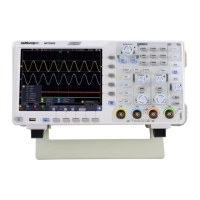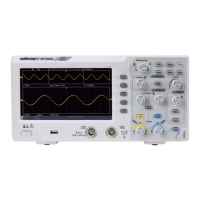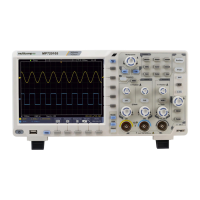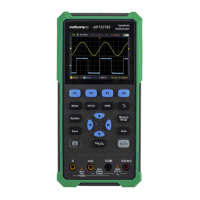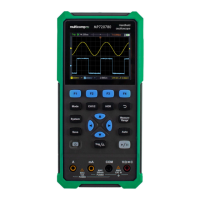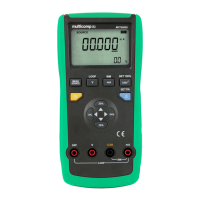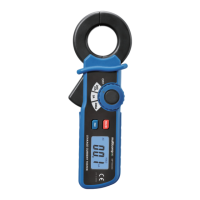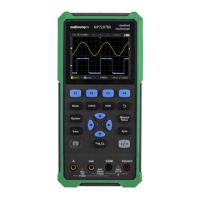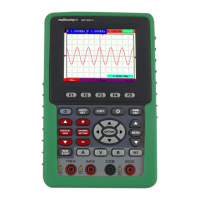Do you have a question about the multicomp pro MP720012 and is the answer not in the manual?
Overview of the oscilloscope's physical layout and components.
Explanation of the oscilloscope's graphical display and user interaction elements.
Steps for checking the instrument's condition and completeness upon receipt.
Procedure for verifying the oscilloscope's basic operational functions.
Adjusting the probe to ensure accurate measurements by matching its characteristics.
Configuring the probe's attenuation setting to match the oscilloscope's scale.
Guidelines for safe operation of the oscilloscope probe to prevent injury.
Procedure to optimize the oscilloscope's accuracy by self-calibration.
Overview of controls for vertical signal display and scaling.
Overview of controls for horizontal signal display and time base.
Overview of settings for synchronizing waveform acquisition.
Detailed steps for configuring vertical settings like coupling, probe, and limit.
Using calculation functions like addition, subtraction, multiplication, division, and FFT.
Explanation of low-pass, high-pass, band-pass, and band-reject filters.
How to use rotary controls for vertical positioning and voltage scaling.
Procedures for adjusting horizontal time base settings, position, and window expansion.
Guide to configuring trigger modes, sources, and levels for stable waveform acquisition.
Configuration of acquisition modes like sample, peak detect, and averaging.
Settings for waveform display types, persistence, and XY/Trig Freq modes.
Procedures for saving, recalling, and managing waveforms and settings.
Steps to cut a segment of a waveform and save it to external memory.
Functionality for recording, playing back, and storing waveforms.
Configuration of system settings like language, display, and adjustments.
Using automatic measurement functions for signal parameters.
Using voltage and time cursors for precise waveform measurements.
Quick and automatic setup of oscilloscope parameters for signal display.
Accessing the oscilloscope's help system for guidance.
Explanation of key function buttons like Autoset, Run/Stop, Single, and Copy.
Connecting the oscilloscope to a PC using a USB data cable.
Connecting the oscilloscope to a PC using a LAN connection.
Connecting the oscilloscope to a PC using a COM port.
Demonstrating signal display and automatic measurements.
Measuring input and output signals to calculate amplifier gain.
Techniques for capturing non-periodic or transient signals.
Using Peak Detect and Average functions to analyze signal noise.
Using X-Y mode to analyze phase difference between two signals.
Applying video trigger to stabilize video signal display.
List of standard accessories included with the oscilloscope.
Guidelines for maintaining and cleaning the oscilloscope.
| Brand | multicomp pro |
|---|---|
| Model | MP720012 |
| Category | Test Equipment |
| Language | English |
